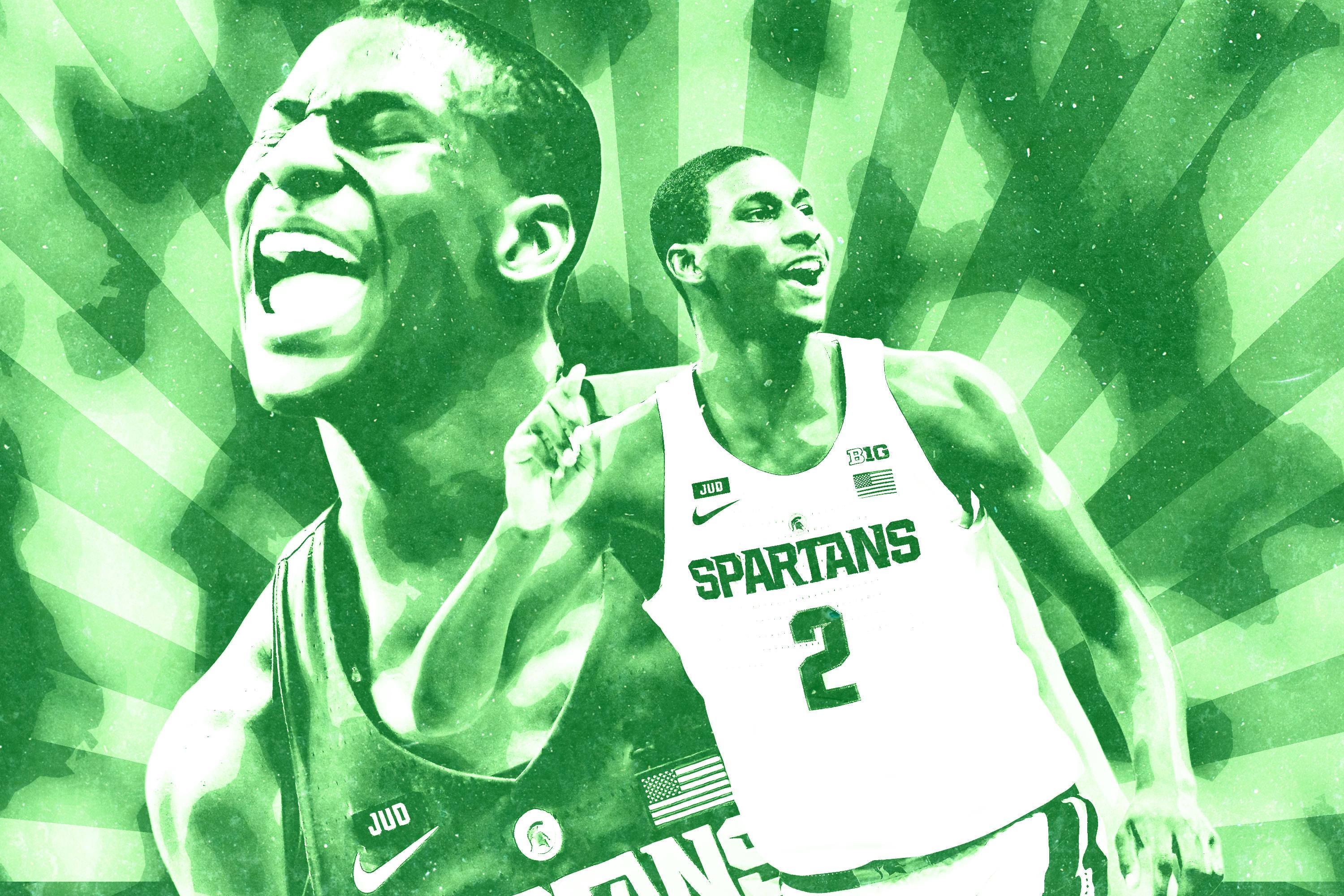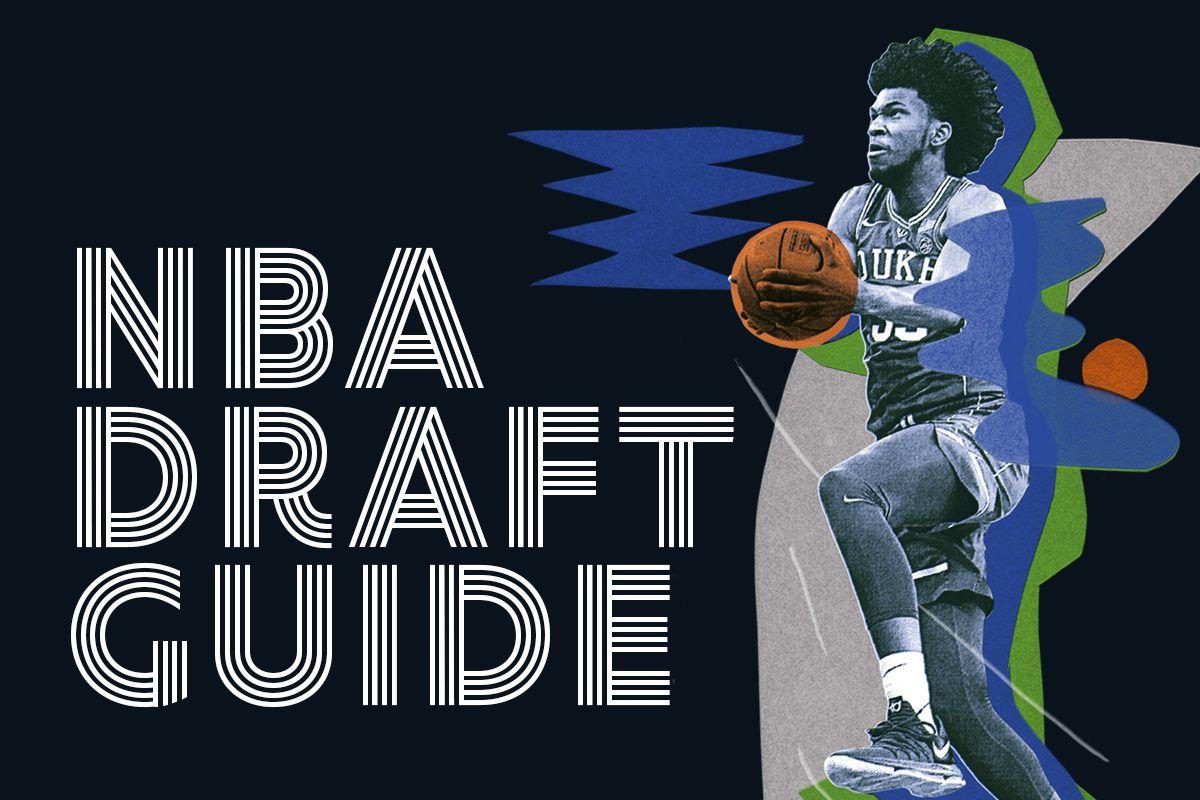
Jaren Jackson Jr. has a chance to be the best big man in the 2018 NBA draft. He’s certainly the best two-way player of the bunch right now, better defensively than Deandre Ayton and Marvin Bagley III and better offensively than Mohamed Bamba. Jackson fits the new prototype for NBA centers: He knocks down 3s, protects the rim, and defends the 3-point line. Despite being the youngest player likely to enter the draft, he’s also one of the safest picks. He won’t have to change his game to be an elite player at the next level. The only thing holding him back is being underutilized in the Michigan State offense. He has the highest floor of all the freshman bigs and more upside than his stats suggest.
Jackson is a new kind of defensive anchor. At 6-foot-11 and 242 pounds, his frame is right in the sweet spot between size and speed. He’s big enough to be a dominant presence inside without sacrificing his ability to guard on the perimeter. Jackson is the cornerstone of the no. 9 defense in the country as a freshman. According to the tracking numbers at hooplens.com, the Spartans give up 0.87 points per possession when he’s in and 0.98 points per possession when he’s out. He’s the only starter the team defends better with when he’s on the floor than when he’s off.
Bamba gets the Rudy Gobert comparisons, but Jackson is the more effective defender. While he doesn’t have Bamba’s freakish physical dimensions, he actually blocks more shots per minute. He blocks 15.4 percent of the opposing team’s 2-point field goal attempts when he’s on the floor, which would be the highest block rate of any player drafted in the lottery since they began tracking the stat in 2010. He has everything an elite interior defender needs: He has a 7-foot-4 wingspan that covers the rim, he’s fast enough to rotate across the court quickly and cut off dribble penetration, he keeps his head on a swivel and always knows where the other nine players on the floor are, and he never gives up on plays.
Jackson does all this despite rarely playing center. He has spent 84.9 percent of his time on the floor this season as a power forward next to one of three traditional big men (sophomore Nick Ward, senior Gavin Schilling, or freshman Xavier Tillman). Jackson guards the smaller and faster frontcourt player on the opposing team, so he’s often chasing small-ball 4s around the perimeter. It’s valuable experience for the next level, where he will have to switch screens and stay with shooters above the 3-point line, regardless of the position he plays.
His most interesting individual assignment so far was Ohio State’s Keita Bates-Diop, an athletic 6-foot-7 junior combo forward who will likely be a first-round pick in this year’s draft. Bates-Diop’s ability to score all over the floor has made him a breakout star this season, and he is the type of versatile wing Jackson will need to contain off the dribble in the NBA. In their game on January 7, Bates-Diop went 3-of-6 from the field with one turnover and one drawn foul in eight possessions during which Jackson was the primary defender, including one when Jackson shadowed him from the 3-point line to the rim and blocked his shot.
Jackson’s defense is hard to miss, but his contributions on offense can slip through the cracks. He doesn’t get the chance to fully show his game. He is the fifth option at Michigan State, averaging 11.4 points, 6.2 rebounds, and 1.2 assists per game on 52.2 percent shooting. He takes only 6.4 field goal attempts per game, compared to 8.9 for Bamba, 12.3 for Ayton, and 13.7 for Bagley. Jackson starts next to another projected lottery pick at small forward (Miles Bridges), a dominant low-post threat at center (Ward), a quality point guard (Cassius Winston), and a McDonald’s All American at shooting guard (Joshua Langford). This is Tom Izzo’s most talented team in his 23 seasons as the head coach in East Lansing.
The Spartans don’t need Jackson to do much beyond space the floor. Three-point shooting is in his blood. His father, Jaren Jackson Sr., was a shooting specialist who spent 12 seasons in the NBA. The son’s form is unorthodox, as he swings the ball in front of his face and almost pushes it toward the basket, but he has consistent mechanics and he gets it off quickly. Defenders have to stay attached to him. According to the tracking numbers at Synergy Sports, he averages 1.259 points per possession this season on guarded jumpers. Jackson is by far the best shooter of the elite bigs in this class:
Top Big-Man Prospects of 2018, by the (Shooting) Numbers
There’s little chance that Jackson will bust — players with his skill set don’t need a huge role on offense to be incredibly valuable. This is not a guy on a hot streak. He has a track record of knocking down shots. He shot 28-for-64 from deep (43.8 percent) last summer on the Nike EYBL circuit. Jackson projects as an elite shooter and shot blocker, and there’s no obvious comparison to make for him at the next level. He’s a hybrid of Serge Ibaka and Myles Turner. Ayton, Bagley, and Bamba may jump off the screen more when you watch them play, but Jackson is the closest thing to a 3-and-D unicorn in this draft.
His two-way impact isn’t just something to project to the NBA level. It translates to the NCAA right now. Switching Jackson with any of his peers would significantly improve their college teams. Neither Ayton nor Bagley is much of an interior defender, and defense has been the Achilles heel for Arizona (no. 196 in the country) and Duke (no. 110) this season. Bamba can’t force his man out of the paint, and Texas is no. 328 in the country in 3-point percentage. There are trade-offs to playing big men who excel on only one end of the floor. Jackson makes his teammates better on both. He creates space for them on offense and covers for them on defense.
Jackson’s shooting ability will be even more important in the NBA, where having shooters at every position is becoming a necessity. A center who can shoot 3s gives the offense room to breathe and creates huge driving lanes to the rim for his guards. Jackson is a perfect fit for the spread pick-and-roll, which almost every NBA team runs these days. A team that drafts Ayton or Bagley would have to restructure its offense to emphasize what makes them so great in college: their ability to score out of the post. The problem is there’s a trade-off to keeping a big man in the lane. Perimeter players in the NBA these days aren’t as comfortable spotting up and throwing the ball inside, and they are too dynamic off the dribble to stand around waiting for it to come out.
There’s also nowhere to hide a poor defensive center in the NBA. Offenses will isolate them in the pick-and-roll and force them to make quick decisions in space — and there is much more space to cover at the next level. The 3-point line is farther out and professional shooters are deadlier than their NCAA counterparts. They get to the rim faster, and they are better finishers when they get there. It takes years for even good defensive prospects to learn the ropes at center. Players who struggle to protect the rim in college rarely figure out how in the NBA.
The conversation around the big men in this draft isn’t as clear-cut as it might appear. It’s easy to fall in love with college numbers in February, but skill set and projectability become more important the closer it gets to draft night. I talked to two executives from teams likely picking high in the lottery who agreed that Jackson could end up as the best player of the four. Every scout and talent evaluator I’ve talked to sees him as having a high floor. The debate in NBA front offices is about his ceiling.
Izzo has good reasons for not playing Jackson at the 5 in the regular season. College coaches have to run their program with one eye on the present and one on the future. Ward should be Michigan State’s primary option next season when Bridges and Jackson are in the NBA; benching him now could mean losing him forever. Schilling has earned the right to play as a senior, and Tillman needs to be developed for a bigger role as a sophomore. Izzo may be saving his best lineups for March. In 132 possessions with Bridges at the 4 and Jackson at the 5 this season, Michigan State has an offensive rating of 126 and a defensive rating of 101.
Jackson would have more room to operate as a center. He’s not just a spot-up shooter. He can put the ball on the floor and make straight-line drives when defenders press up on him. Jackson has had several plays this season in which he’s faced up his man, gotten to the rim in two steps, and dunked in traffic. It’s easier to make those plays at the 5 than the 4. Given the way the league is trending, Jackson will probably not play with a big man like Ward who clogs up the paint in the NBA.
Jackson makes the most of his chances on offense. He just hasn’t gotten many. He is in the 97th percentile of players around the country as a post scorer in 35 possessions, and he’s in the 73rd percentile as the screener in the pick-and-roll in 20 possessions. Jackson plays to his strengths, and he doesn’t take bad shots. He has only one long 2-point jumper all season. He has the lowest 2-point percentage of the four elite big men, but has the highest true shooting percentage because his possessions often end in either 3s or free throws:
Top Big-Man Prospects of 2018, by the (Advanced Shooting) Numbers
To be sure, Jackson has some clear limitations. He’s not quite as athletic as his peers, which you can see in his 2-point percentage, and his shooting motion makes it difficult for him to shoot off the dribble, since he’s swinging the ball in front of his face. Like most young left-handed players, Jackson almost never goes to his right. He doesn’t have many advanced post moves, either. He’s just so much bigger and more athletic than the defenders he faces at the 4 that it doesn’t matter. Jackson also hasn’t shown much ability as a passer, averaging 1.2 assists and 2.1 turnovers per game.
His biggest issue this season has just been staying on the floor. Jackson plays only 23.0 minutes per game because he averages 5.7 fouls per 40 minutes of playing time. Like a lot of young shot blockers, Jackson is still learning to channel his aggressiveness. A player who tries to block every shot is vulnerable to pump fakes, and more experienced players can get under him and draw contact. He’s not done growing into his body. He has put on 15–20 pounds of muscle over the past nine months, and he’s still learning how to use his newfound strength.
His flaws are understandable when you take age into account. Jackson turned 18 in September. He’s 16 months younger than Bamba and 14 months younger than Ayton. He’s six months younger than Bagley, even though Bagley reclassified before the season to skip his senior year of high school. One year of physical development is a big deal for a teenager, and Jackson has spent his whole life playing against older players. He’s one of the best players in the country even though he should still be in high school. Freshmen have a lot of room to grow their game. Jackson has even more than most.
Jackson may never be a primary option. The good news is that he doesn’t need to score 20 a game to be an elite player. A big man with his specific talents changes the geometry of the floor. A team with Jackson at the 5 can play five-out on both sides of the ball. They will space the floor more than a team with Bamba, and guard more of it than one with Ayton or Bagley. Jackson doesn’t have their stats in college, but he’s playing on a better team. The same thing could happen in the NBA.


